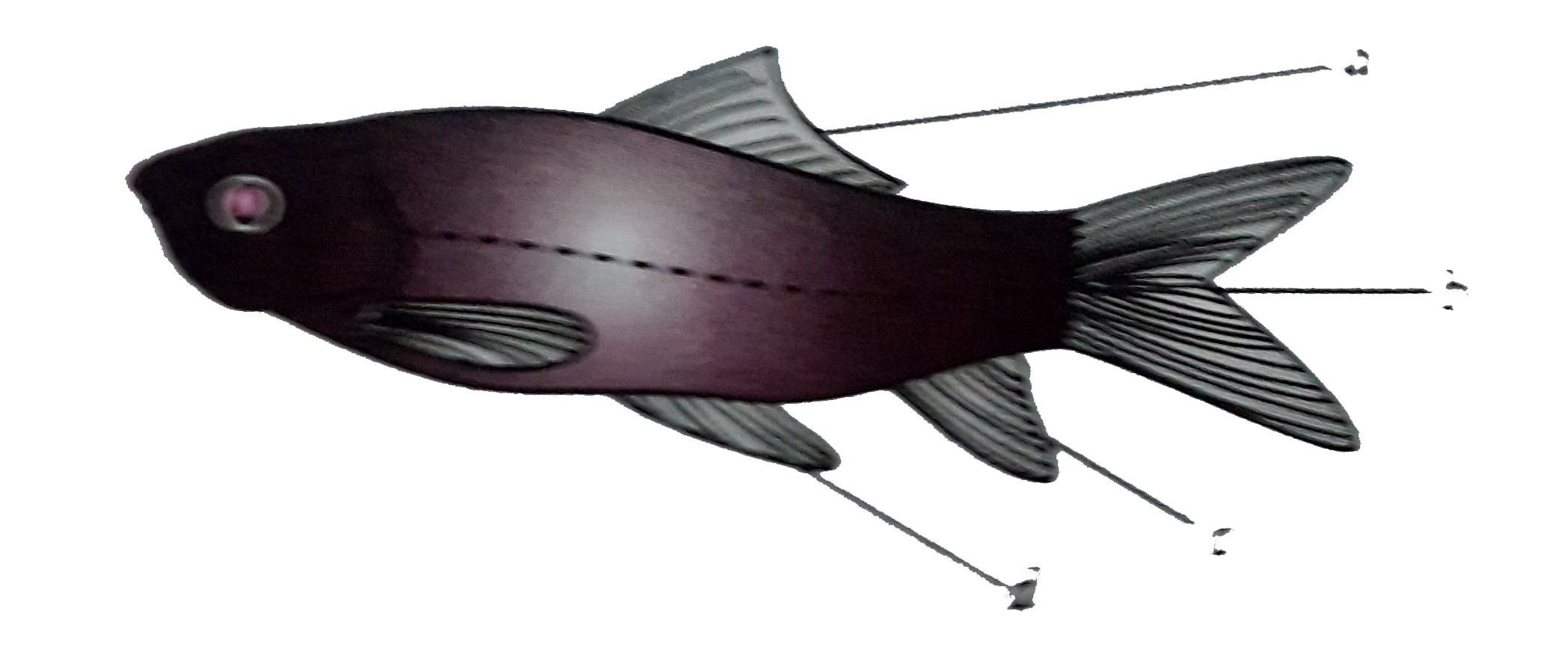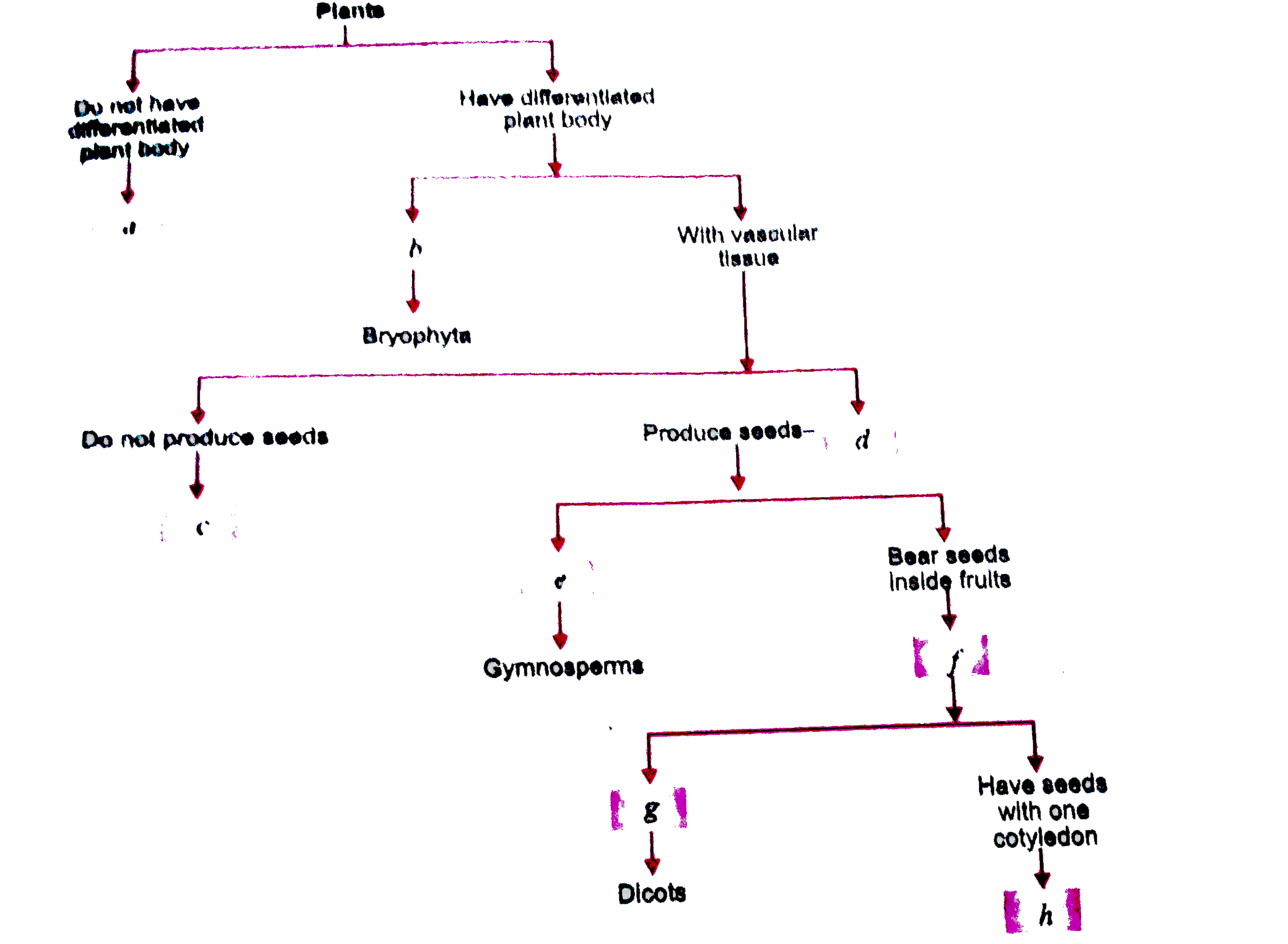Complete Solutions to SHORT ANSWER QUESTIONS of chapter DIVERSITY IN LIVING ORGANISMS of Class 9 book with complete answers and questions
| Class 9 | BIOLOGY |
| Chapter | DIVERSITY IN LIVING ORGANISMS |
| PRADEEP | SHORT ANSWER QUESTIONS |
| Number Of Questions | 100 |
| Academic Year | 2023-24 |
Wittakar proposed five kingdom classification,
View SolutionMonera is divided into Archaebacteria and Eubacteria.
View SolutionStarting from Class, Species comes before the Genus.
View SolutionAnabaena belongs to the kingdom Monera.
View SolutionBlue green algae belongs to the kingdom Protista.
View SolutionAll prokaryotes are classifed under Monera
View SolutionFungi shows..........mode of nutrition.
View SolutionCell well of fungi is made up of .........
View SolutionAssociation between blue green algae and fungi called as ..........
View SolutionChemical nature of chhitin is .........
View Solution.......... has smallest number of organisms with maximum number of similar characters.
View SolutionPlants without well differentiated stem, root and leaf are kept in ..........
View Solution.......... are called as amphibians of the plant kingdom
View SolutionYou are provided with seeds of Gram, Wheat, Rice, Pumpkin, Maize and Pea. Classify them whether they are monocot or dicot.
View SolutionMatch items of column (A) with items of colomn (B)
`{:(,(A),,(B)),((a),"Naked seed",(A),"Angiosperms"),((b),"Covered seed",(B),"Gymnosperms"),((c),"Flagella",(C),"Bryophytes"),((d),"Marchantia",(D),"Euglena"),((e),"Marsilea",(E),"Thallophyta"),((f),"Cladophora",(F),"Pteridophyta"),((g),"Pnicillium",(G),"Fungi"):}`
View SolutionMatch items of column (A) with items of colomn (B)
`{:(,(A),,(B)),((a),"Pore bearing animals",(A),"Arthropoda"),((b),"Diploblastic",(B),"Coelenterata"),((c),"Metameric segmentation",(C),"Porifera"),((d),"Jointed legs",(D),"Echinodermata"),((e),"Soft bodied animals",(E),"Mollusca"),((f),"Spiny skinned animals",(F),"Annelida"):}`
View SolutionClassify the following organisms based on absence of true coelom as acoelomate, pseudocoelomate, and coelomate : Spongilla, Sea anemone, Planaria, Liver fluke, Wucherria, Ascaris, Nereis, Earthworm, Scorpion, Birds, Fishes and Horse
View SolutionEndoskeleton of fishes are made up of cartilage and bone. Classify the following fishes as cartilaginous or bony : Torpedo, sting ray,Dog fish,Rohu, Angler fish, Exocetus.
View SolutionClassify The following based on number of chambers in their heart. Rohu, socliodon, From, Salamander, Flying lizard , King Cobra, Crocodile, Ostrich, Pigenon, Bat, Whale.
View SolutionCalassify Rohu, Scolidon, Flying , King Kobra, Frog, Salamander, Ostrich, Pigeon, Bat, Crocodile and Whale into the cold blooded/warm blood animals
View SolutionName two egg laying mammals.
View SolutionFive kingdom classification of livuing organism is givne by ........
View SolutionBasic smallest unit of classification is .........
View SolutionProkaryotes are grouped in Kingdom ........
View SolutionParamecium is a protista because of its ........
View SolutionFungi do not contain ..........
View SolutionA fungus ........... can be seen without mircroscope
View SolutionCommon fungi used in preaparing the bread is .........
View SolutionAlage and fungi form symbiotic association called. ..........
View SolutionGymnosperms differ from Angiosperms in having covered seed.
View SolutionNon flowering plants are called Cryptogamae.
View SolutionBryophytes have conducting tissue.
View Solutionfunaria is a moss.
View SolutionCompound leavs are found in many ferns
View SolutionSeeds contain embryo.
View SolutionBilateral, dorsiventral symmetry is found in .........
View SolutionWorms caousing diseases elephantiasis is .........
View SolutionGive examples for the following
(a) Bilateral, dorsiventral symmetry is found in ……. .
(b) Worms causing disease elephantiasis is …….. .
(c ) Open circulatory system is found in …….. Where coelomic cavity is filled with blood (heamolymph).
(d) ........ are known to have pseudocoelom.
View SolutionGive examples for the following
(a) Bilateral, dorsiventral symmetry is found in ……. .
(b) Worms causing disease elephantiasis is …….. .
(c ) Open circulatory system is found in …….. Where coelomic cavity is filled with blood (hemolymph).
(d) ........ are known to have pseudocoelom.
View SolutionLabel a,b,c and d, given in Fig. Give the function of (b)

View SolutionFill in the boxes given if Fig. with appropriate characteristics/plant groups (s)

View SolutionDefine classification.
View SolutionDefine a species
View SolutionWhat is nomenclature ?
View SolutionWhat are phanerogams ?
View SolutionWhy are bryophytes called the amphibians of the plant kingdom?
View SolutionWhat is the fate of notochord in higher chordates?
View SolutionWrite two characteristic features of pisces.
View SolutionWrite any four examples of phylum : Mollusca
View SolutionBlue green algae are callsified along with bacteria placed in Kingdom-Morena
(b) Bryophytes are called amphibians of plant kingdom
View SolutionName the three germ layers. Which group of animals are diploblastic and why?
View SolutionWrite down two unique characters of Porifera.
View SolutionGviven below few animals. Name the phylum ot which they belong :
Silver fish, Cuttel fish, Jelly fish, Star fish.
View SolutionName any two roudn worsm found as parasites in human body.
View SolutionWrite two characteristics of phylum Annelida.
View SolutionName atleast two insects which carry pathogens of diseases.
View SolutionName any four echinoderms.
View SolutionWrite two important fetures of sub-phylum Protochordata.
View SolutionHow would you define 'alpha diversity' and 'beta diversity' ?
View SolutionGive two important characteristics each of cyanbacteria and Archaebacteria.
View SolutionName the sex organs of gymnosperms and angiosperms
View SolutionGive two important characteristics of thallophyta.
View SolutionWhat is peculiar about sex organs in bryophytes ?
View SolutionWhat is artficial classification ? How is it different from phylognetic classificaiton ?
View SolutionGiven four characteristics on which 5- kingdom classification is based
View SolutionGive two basic differences between bryophytes and pteridophytes .
View SolutionWrite down differences between dicots and monocots.
View SolutionName the extertory organs present in the repreentatives of (a) plathyelmithes (b) Phylum Annelida
View SolutionDefine the tern (a) Protostomia (b) Deuterostomia
View SolutionFrogs and toads belong to which class of vertebrates ? Write the most important feature of this class.
View SolutionName the smallest and the largest bird species.
View SolutionGive the most characteristic features of phylum mollusca.
View SolutionDefine birds. Give two examples of flightless birds
View SolutionGive two examples of egg-laying nammals
View SolutionWhy should the bords feed more often than lizards ?
View SolutionWhat are the five main characteristics of chordates ?
View SolutionGive a general idea of the diversity of living organisms
View SolutionGive a brief account of the various ranks used in classification ,
View SolutionOne important phylum of kingdom-Animalia of two kingdom system was removed and placed in kingdom Prostista of 5 Kingdom system. Name this phylum and give important features.
View SolutionDistinguish between the following.
(a) Monera and Protista on the basic of nucleus.
(b) Fungi and Plants on the basis of mode of nutrition
(c) Gymnosperms and angiosperms on the basis of fruits
View SolutionDistinguish between
(a) Echanidodermata and chordata on the basic of notochord
(b) Pisces and aves on the basic of breathing.
(c) Platyhelminathese and Echinodermata on the basic of body cavity or coelom.
View SolutionWrite nine major phyla of animal kingdom
View SolutionWrite the three important features of class Mammalia.
View SolutionDefine birds, Give three examples each of flightless birds and insectivorous birds
View SolutionBriefly explain sub-kingdom cryptogamae.
View SolutionMention three basic difference between gymnosperms and angiosperms
View SolutionWrite three characteristic features of divison-Thallopyta. Give one example each of unicellular, filamnetous unbranched and filmentous branched thallophytes.
View SolutionList four distinctive characters of phylum chordata. Classify different chrodats into classes.
View SolutionList six criteria used for clasifying animals into different groups
View SolutionName major phyla of Animal kingdom. Write down one character and one example of each of them.
View SolutionList three similarities and dissimilarities between hemichordates and chordates.
View SolutionName the phylum to which earthworm belongs . Gie one speific feature of this phylum
View SolutionYou are given free-floating , bright green, silky mass from the surface of fresh water pond Study it under the microscope and identify it. Also classify it.
View SolutionName the parts of typical flower which are commonly named as
(i) reproductive whorls (ii) Accessory whorls
View SolutionYour are provided with a chat depicting photographs of birds found in your region. Write atleast four characteristic features of birds.
View SolutionYour teacher has provided you the following picture of a plant.
Name it and identify the group to which it belongs . Names its four parts labelled as A,B,C and D

View SolutionYou are given a chart depicting a photograph of a plant called Pinus.
(a) Write one characteristic feature of the group to which it belongs. Also name group (Division ).
(b)In this group, aggregated sporophylls form a structures. Name it.
View Solution(a) Study any angiosperms plant. Write one characteristic feature of this group.
(b) Given one feature each of monocot and dicot plant also mention example of each.
View SolutionYou are given a specimen of cockroach. Study it carfully.
(a) To which phyllum does it belong ? (b) Its body is divisible into how many parts ? Name them.
(c ) How many pairs of appendayes does it possess ?
(d) Write one characteristics feature of the group to which it belongs.
View SolutionThe given specimen has following features : (a)Aquatic, Cold-blooded animals (b) Skin covered with scales is two-chambered (d)Fins and muscular tail help them to swim in water. (i) Identify the specimen. (ii) Name the groups (class) to which it belongs. (iii) Give one adaptation w.r.t. its habitat.
View Solution
SHORT ANSWER QUESTIONS questions and complete solutions for chapter DIVERSITY IN LIVING ORGANISMS of PRADEEP BIOLOGY (HINGLISH) of Class 9